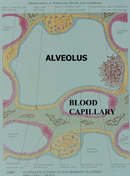I’m going to step in here, as I think we are getting very confused about the difference between apnea in breath-hold diving and scuba diving, where skip-breathing is sometimes practiced. These are physiologically very different scenarios. For breath-hold diving, training oneself to ignore the need to breath is quite a dangerous practice. Believe me, there is no warning about oxygen-deficient blackout in SWB. One moment everything is fine, the next, nothing. Also, if you have pre-programmed your brain to swim a distance in a pool, for instance, your body will take that command and continue swimming after blackout. Therefore, when someone sees a body at the bottom, it may already be very late to resuscitate that individual.I'm going to disagree somewhat. No question that I can train myself (and did at one point) to ignore higher levels of CO2. If O2 is not the driver of breathing, and I agree it is not, then training oneself to ignore the need to breathe is in fact CO2 training.
Now, skip breathing in scuba diving is an entirely different practice, and the CO2 levels really don’t play much role in this practice. Why? Well, because respiration continues before oxygen levels are fully depleted and CO2 levels have failed to build up to the “must breathe” signal. I sometimes skip-breath when photographing small fish. I also sometimes simply hold my breath while trying to get that close-up of small critters with my camera or GoPro. This is followed by a series of fairly rapid breaths to ventilate my lungs when I’ve gotten the photo (or missed it—that also happens).
But this thread has gotten off the original topic, which was talking about breath-hold diving. It’s sorta been hijacked to a completely different topic, of how nitrox might affect scuba diver’s breathing cycles, which are not based upon the “urge to breath” in the breath-hold diving context. The problem with doing this is that assumptions made in breath-hold diving may be dangerous for nitrox diving at depth, and (especially) vice-versa. I see a lot of wrong-headed thoughts above about training for altitude (which in fact requires a long acclimatization period for the body to adjust to diminished oxygen at altitude, by increasing red blood cells (RBCs), for instance, which takes weeks to accomplish).
SeaRat
PS, I have just read Dr. Simon Mitchell’s paper referenced in my post below, and lung packing can increase the blood oxygen levels.




